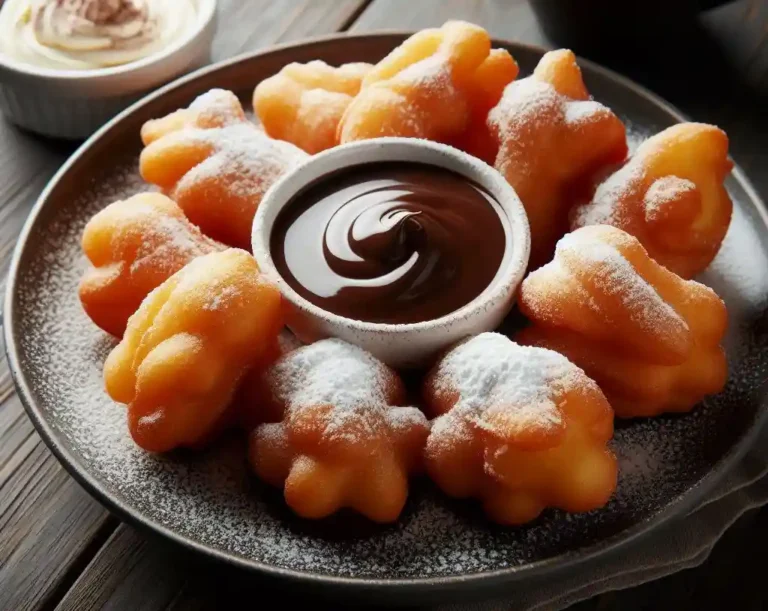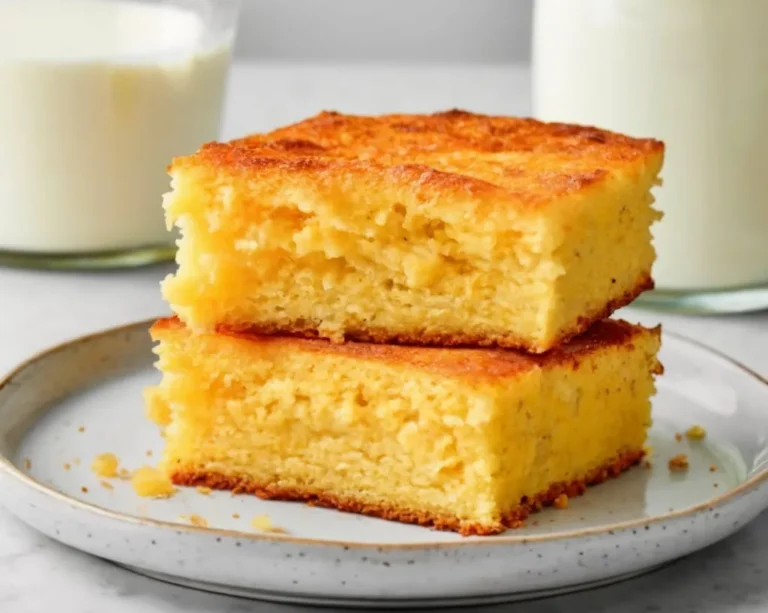How to Sweeten Unsweetened Coconut? – Add a Dash of Sweetness
Are you a fan of coconut but find unsweetened coconut a bit too bland? Do you want to know how to add a touch of sweetness to your favorite recipes?
Look no further! This blog post will explore different methods to sweeten unsweetened coconut and enhance its flavor profile.
Whether you prefer traditional sugar, natural sweeteners, or creative alternatives, we’ve got you covered. Let’s dive in and learn how to add a dash of sweetness to unsweetened coconut.
How to Sweeten Unsweetened Coconut? – A Quick Overview

Method 1: Using Honey or Maple Syrup
- 1 cup unsweetened shredded coconut
- 1-2 tablespoons honey or maple syrup
Combine the coconut and honey or maple syrup in a small bowl. Mix until the coconut is evenly coated with the sweetener.
Method 2: Using Granulated Sugar
- 1 cup unsweetened shredded coconut
- 1-2 tablespoons granulated sugar
Combine the coconut and sugar in a small bowl. Mix until the coconut is evenly coated with the sugar.
Method 3: Using Stevia or Erythritol
- 1 cup unsweetened shredded coconut
- 1-2 packets stevia or 1-2 teaspoons erythritol
Combine the coconut and stevia or erythritol in a small bowl. Mix until the coconut is evenly coated with the sweetener.
Tips:
- Adjust the amount of sweetener to your taste preferences.
- You can also add a pinch of salt to balance the sweetness.
- Experiment with different sweeteners, such as agave nectar or coconut sugar, for a unique flavor.
- Store the sweetened coconut in an airtight container for up to 2 weeks.
Benefits:
- Easy to make with just a few ingredients.
- Customizable to your taste preferences.
- Perfect for adding sweetness to oatmeal, yogurt, or baked goods.
Variations:
- Add a teaspoon of vanilla extract for an extra boost of flavor.
- Mix with cinnamon or nutmeg for a warm and spicy flavor.
- Use sweetened coconut as a topping for ice cream or pancakes.
Understanding Unsweetened Coconut

Unsweetened coconut is the dried flesh of the coconut without any additional sweeteners. It maintains a distinct nutty flavor and a versatility that makes it a staple in various culinary contexts, from savory dishes to sweet desserts.
This form of coconut is especially favored in health-conscious recipes or for those monitoring their sugar intake, as it contains the natural sugars present in coconut itself without any extras.
It can serve as a foundation in baking, add texture and flavor to cooking, or be sprinkled over breakfast bowls for an extra crunch.
For those who find its natural taste not quite to their liking, there are numerous simple methods to enhance its sweetness to cater to personal preference without compromising its inherent coconut essence.
The Benefits of Sweetening Your Own Coconut

By choosing to sweeten unsweetened coconut at home, you embrace the power of customization. This approach empowers you to fine-tune the sweetness level according to your personal taste or dietary needs, ensuring every dish meets your exact preferences.
Moreover, this DIY method sidesteps the common pitfalls of store-bought sweetened coconut, such as unnecessary additives or excessive sugars, offering a cleaner, more wholesome ingredient.
It also opens up a creative avenue for culinary experimentation, inviting you to explore a variety of sweeteners—from natural alternatives to flavorful syrups—and how they interact with coconut’s unique texture and taste.
This not only enriches the cooking or baking experience but also allows for healthier choices without compromising on flavor.
Preparing Unsweetened Coconut for Sweetening

To kick off the process of sweetening unsweetened coconut, it’s imperative to first prep it adequately. Begin with lightly toasting the coconut flakes in a skillet over a medium flame.
This step is crucial as it brings forth the coconut’s inherent nutty flavors, making it more receptive to sweetening agents.
Keep a close eye on the flakes, stirring frequently, until they achieve a golden hue and emit a rich, fragrant aroma. After achieving the desired toastiness, set the coconut aside to cool.
This cooling period is essential; it ensures that any sweetener added subsequently adheres well without dissolving into the warm flakes, maintaining the coconut’s desirable crunch and texture.
Once cooled, the coconut is primed and ready for the sweetening process, poised to absorb the flavors of your chosen sweeteners effectively.
Sweetening with Sugar – The Classic Method

Utilizing sugar to enhance the flavor of unsweetened coconut is a straightforward and popular technique. To achieve this, simply blend the toasted coconut with an amount of sugar that aligns with your sweetness preference, ensuring a uniform mixture.
Various forms of sugar, such as granulated, powdered, or brown sugar, can be employed depending on the flavor complexity you desire.
For those inclined towards a caramelized texture, caramelizing the sugar prior to its incorporation with the coconut yields a delightfully crunchy layer that excels as a garnish for desserts or as a standalone snack.
This method provides a classic taste that beautifully complements the coconut’s natural essence.
Using Syrups for a Deeper Flavor
For those looking to enrich unsweetened coconut with both sweetness and a depth of flavor, incorporating syrups is an exquisite choice. Syrups such as maple, honey, agave nectar, or coconut nectar not only infuse the coconut with a delightful sweetness but also introduce a complex flavor profile that can elevate any dish.
To apply, evenly drizzle your chosen syrup over the cooled, toasted coconut flakes, ensuring each piece is well-coated. To further enhance the taste, consider adding a pinch of salt to balance the sweetness or spices like cinnamon or nutmeg for a warm, aromatic touch.
This method transforms the coconut into a versatile ingredient with a glossy, flavorful coating, ideal for a variety of culinary applications ranging from baking endeavors to enhancing breakfast bowls.
The synergy between the toasted coconut and the rich, velvety syrup creates a truly irresistible combination, perfect for those seeking a sweet yet sophisticated component for their recipes.
Natural Sweeteners for a Healthier Option
For those seeking a health-conscious way to sweeten unsweetened coconut, natural sweeteners present a viable solution. Stevia, monk fruit sweetener, and erythritol stand out as excellent choices, offering a way to imbue coconut flakes with a desirable sweetness minus the added calories or sugar spike associated with traditional sweetening methods.
To employ these sweeteners, evenly distribute your choice over the prepared, toasted coconut, ensuring each flake is lightly coated.
This technique allows for a guilt-free enhancement of the coconut’s taste, making it an ideal ingredient for those monitoring their sugar intake or adhering to dietary restrictions.
Additionally, these natural sweeteners can be creatively combined with other ingredients such as syrups or spices, introducing a nuanced flavor complexity that elevates the coconut’s appeal without compromising on healthfulness.
Other Ways to Sweeten Coconut
Exploring alternative methods to sweeten unsweetened coconut can bring an exciting twist to your culinary repertoire. Incorporating flavor extracts such as vanilla, almond, or coconut extract introduces an aromatic sweetness that can enhance the coconut’s natural flavors without overwhelming them.
Another innovative approach is to blend the coconut with inherently sweet ingredients like chocolate chips, dried fruits, or a variety of nuts. This method not only sweetens the coconut but also adds a delightful textural contrast and richness to the final product.
For those with a penchant for indulgence, coating the coconut in melted chocolate or caramel offers a luxuriously sweet and sticky finish that is hard to resist.
These alternative techniques provide a wide array of options for personalizing the sweetness and flavor of your coconut, making it an even more versatile ingredient in your kitchen.
Creative Ways to Use Sweetened Coconut
Embrace the versatility of your newly sweetened coconut by incorporating it into a myriad of culinary creations. Elevate your desserts by folding it into batter for a moist and tropical twist on classic cakes, cookies, and brownies.
Sweetened coconut also makes an exceptional topping, adding a crunch and flavor burst to frosted cupcakes, ice cream, and even fruit salads.
Venture beyond sweets by incorporating it into savory dishes, such as coconut-crusted shrimp or chicken, where the sweetness complements the saltiness exquisitely.
For breakfast, a sprinkle of sweetened coconut can transform ordinary oatmeal or smoothie bowls into a more exotic and flavorful meal to start your day.
Don’t forget about incorporating it into homemade granola or energy bars for a chewy texture and a hint of sweetness that’s sure to please.
The enhanced coconut not only enriches the taste profile of a wide array of dishes but also introduces an exciting textural element that can make everyday recipes feel new and indulgent.
FAQs
Q: Can I use artificial sweeteners to sweeten coconut?
A: Yes, artificial sweeteners can be used, but keep in mind that they might not offer the same rich flavor profile as natural or traditional sweeteners. It’s best to try a few different types to see which one meets your taste and cooking needs.
Q: How long will sweetened coconut last?
A: Properly stored sweetened coconut can last at room temperature in an airtight container for about two weeks. For extended freshness, you can store it in the refrigerator or freezer, where it will keep well for several months.
Q: Can I sweeten coconut without toasting it first?
A: Absolutely, toasting is not a prerequisite for sweetening coconut. You can mix your chosen sweetener directly with the unsweetened coconut flakes to coat them evenly. However, toasting can enhance the coconut’s flavor, so consider this step if you’re looking for an extra boost in taste.

Amelia Winthrop is the creative force behind Skillful Cooking, a blog that serves as a canvas for her culinary creations. With a philosophy that cooking should be accessible and enjoyable, Amelia crafts recipes that blend simplicity with sophistication. Her intuitive approach to the kitchen encourages others to embrace the joy of cooking and the pleasure of sharing meals with loved ones.







